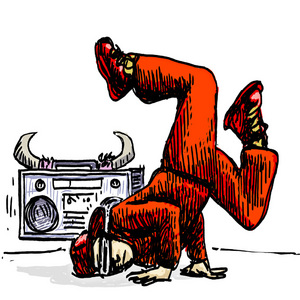Dreams have fascinated humanity since ancient times. But Sigmund Freud and Carl Jung were probably the first to come up with specific theories about why we dream, and even more – what our dreams mean.
The theories of Sigmund Freud (1856-1939)
Freud, who has been called the father of modern psychology, believed that all human beings have desires and urges – many of them animalistic – that have been repressed in order to fit in with society. However, these urges don’t completely disappear; instead, they’re stored in what Freud called the “unconscious.”
According to Freud, when a person is asleep the desires stored in the unconscious can be expressed safely because they’re less likely to affect our waking life. The way they’re expressed is through dreams. So dreams actually serve as a kind of protection – they keep us from being disturbed by inappropriate (socially incorrect) desires and behavior while we’re awake. In other words, dreams keep us sane.
Freud believed that dreams can’t be taken at face value; for example, when your dream contains money, money is not the issue you’re dealing with. Instead, the meanings of dream images are hidden – cloaked in symbolism, which can be deciphered only with the help of a qualified psychoanalyst. But the analyst actually serves two purposes. He or she helps us make sense of the symbols, and also keep us from getting too upset when the meanings of the images are finally revealed. For these reasons, Freud taught that dream analysis should be done only by a trained psychologist.
The theories of Carl Jung (1875-1960)
Jung began his studies of psychology with Freud, but eventually disagreed with some of Freud’s ideas and broke the association to form his own theories. Jung believed that dreams were not meant to hide unacceptable desires from the unconscious mind; instead, their purpose was to reveal those desires to the dreamer. To Jung, dreams were a way for the unconscious to communicate with the conscious mind.
Jung also believed that the unconscious has two parts – one which belongs strictly to the individual, and one which is “collective” and comes from all of humanity. The collective unconscious holds universal myths and symbols. Jung believed that our dreams can contain images from both the personal and the collective unconscious. The presence of images from the collective unconscious, which may not be easy to decipher, might explain why we can’t always understand our dreams right away.
Unlike Freud, Jung believed that dreams aren’t meant to fool the conscious mind, so it’s possible – and in fact probably a good idea – for the individual to do their own dream analysis. Actually, an analyst would be needed only if the images were confusing or ambiguous – perhaps because they came from the collective unconscious.
Conclusion
Many other psychologists have had theories about what dreams mean. But the ideas of Freud and Jung were so innovative that they frequently served as inspiration for later work in the field of dream analysis.
But that doesn’t mean their work has been completely adapted. It still exists in its pure form, and is today practiced by Freudian and Jungian analysts – who still have their share of patients who come to see them just to get help figuring out their dreams.


